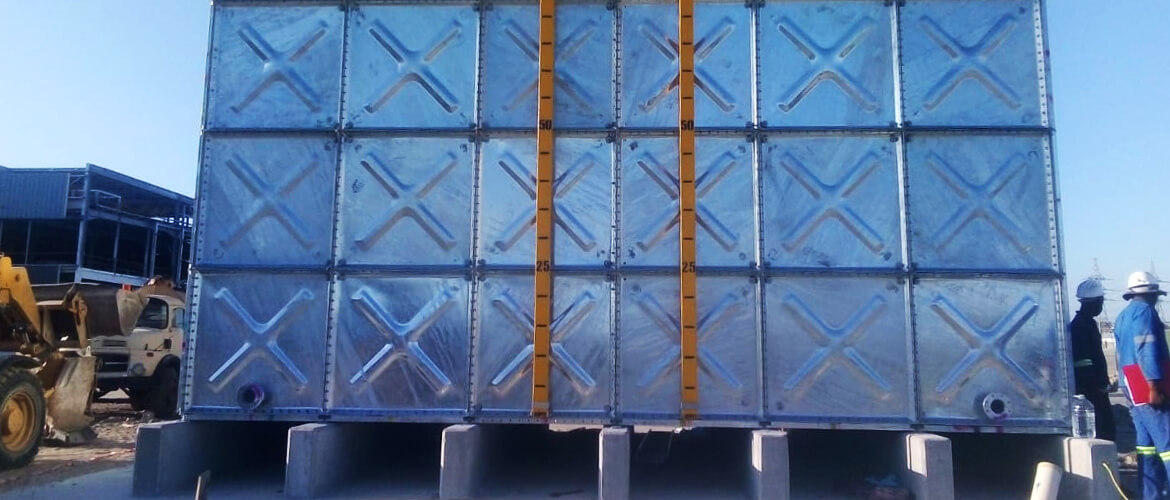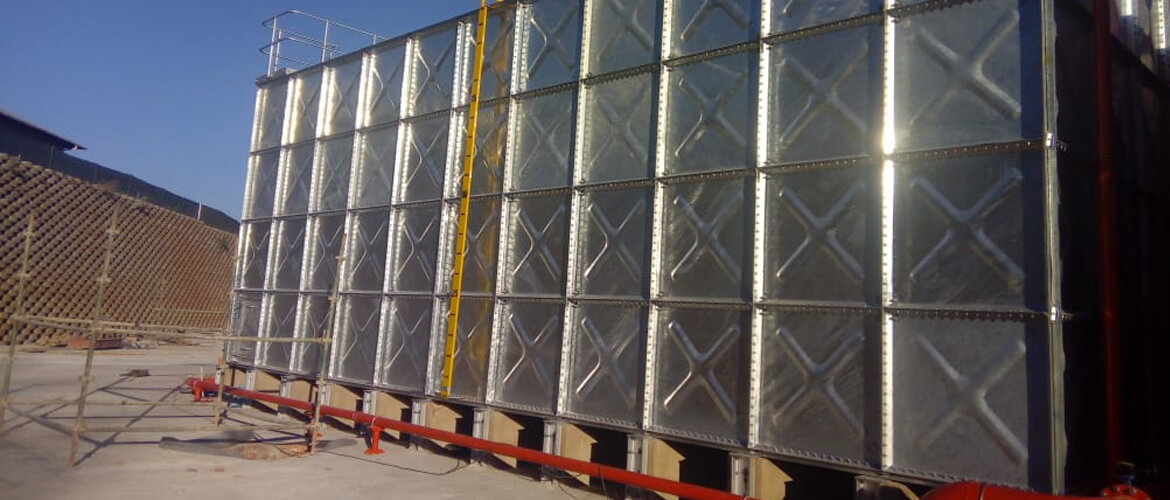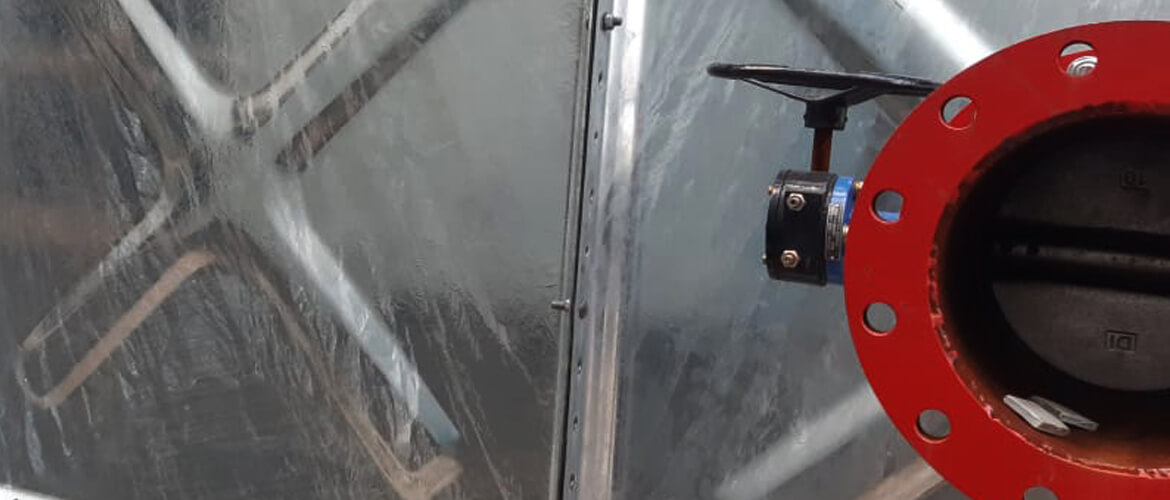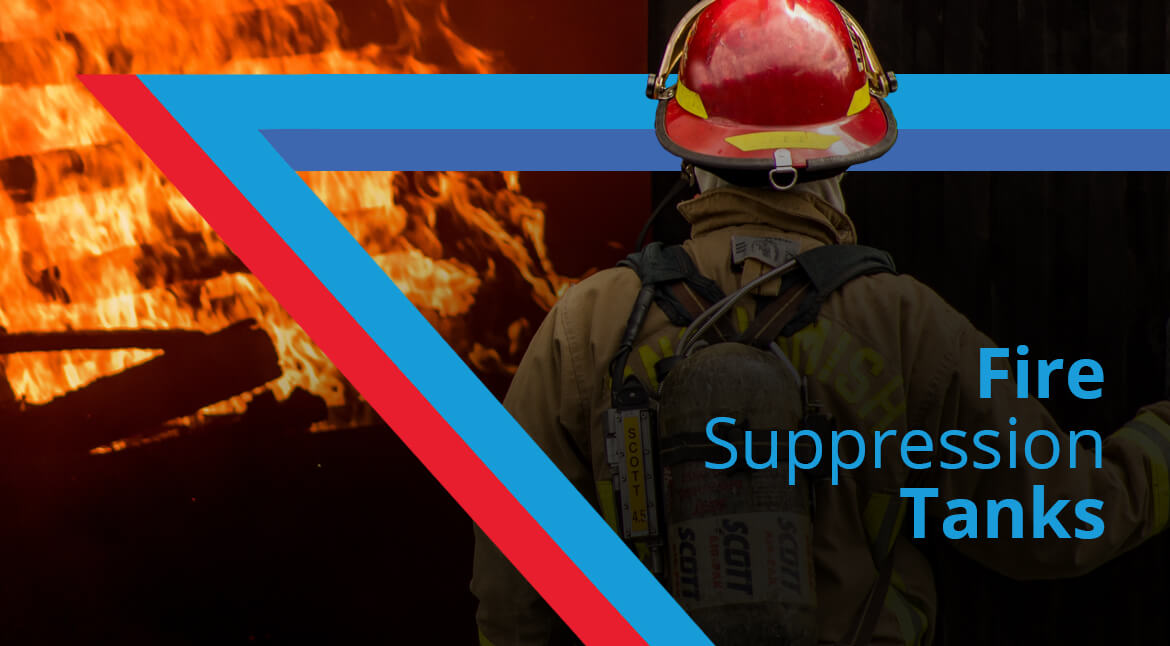Key Considerations for Installing a Fire Suppression Water Storage Tank in South Africa
1. Tank Capacity:
Determining the required capacity of the fire suppression water storage tank is the first and most crucial consideration. This depends on factors such as the size of the facility, occupancy, and the level of fire protection required. The tank should be able to hold enough water to provide an adequate supply for extinguishing fires and meeting the demands of fire sprinkler systems. Fire suppression systems (sprinklers) are not designed to extinguish a fire on their own. Instead, they are designed to slow the spread of a fire until firefighters arrive. The reaction time for firefighters to arrive on the scene can vary, depending on the location of the fire and the availability of resources. In some cases, it may take firefighters 30, 60, or even 90 minutes to arrive. To account for this, fire suppression systems are designed to store enough water to fight a fire for a certain period of time. This ensures that the fire will not spread out of control before firefighters arrive.
2. Tank Material:
Choosing the right tank material is essential for ensuring durability and fire resistance. Steel and concrete are commonly used materials for fire suppression water storage tanks. Steel tanks offer strength and are resistant to corrosion, making them suitable for outdoor installations. Concrete tanks, on the other hand, provide excellent fire resistance and can withstand high temperatures. Concrete tanks are expensive, so many customers choose steel tanks instead. There are two main types of steel tanks: welded and bolted galvanized. Welded tanks are cheaper upfront, but they require more maintenance over their lifespan. Welded tanks need to be painted and weld tested every 3 to 5 years. Shot blasting and repainting a welded tank can cost up to 70% of the original purchase price. This means that the total cost of ownership for a welded tank can be much higher than for a bolted galvanized tank.

3. Regulatory Compliance:
Adhering to local regulations and standards is crucial when installing a fire suppression water storage tank. In South Africa, the South African Bureau of Standards (SABS) provides guidelines for the design and installation of fire protection systems. It is essential to ensure that the chosen tank complies with these regulations to meet safety requirements and avoid potential legal issues.
4. Location:
Selecting an appropriate location for the tank is vital for effective fire suppression. The tank should be situated in an easily accessible area, allowing firefighters to quickly connect their hoses to the system. It is important to consider factors such as proximity to the facility, setback requirements, and clear access pathways. In South Africa, firefighters do not connect directly to tanks. Instead, they use their own water supply. This means that the location of a tank is more important from the point of view of having enough space to accommodate the correct size tank.
5. Fire Department Requirements:
Consulting with the local fire department is highly recommended when planning the installation of a fire suppression water storage tank. Fire departments may have specific requirements or recommendations regarding tank design, location, and access. Their expertise can help ensure that the tank installation meets their standards and facilitates efficient firefighting operations.

6. Tank Maintenance:
Proper maintenance is essential to keep the fire suppression water storage tank in optimal working condition. Regular cleaning, inspection, and any necessary repairs should be performed to prevent any issues that may affect the tank’s performance. Maintenance should be carried out according to manufacturer recommendations and local regulations.
7. Water Source:
Identifying a reliable water source is a critical aspect of installing a fire suppression water storage tank. This can include options such as a well, municipal water supply, or an adjacent body of water. It is important to ensure that the selected water source can provide an adequate and consistent water supply to meet fire suppression needs.
8. Pumping System:
An efficient pumping system is necessary to deliver water from the tank to the fire suppression system effectively. Considerations should include the required pressure and flow rates to ensure that the system can deliver water with sufficient force to extinguish fires. Properly sizing and installing the pump system is crucial for the overall performance of the fire suppression system.

9. Monitoring and Control:
Implementing a monitoring and control system is crucial to ensure the reliability of the fire suppression water storage tank. Regularly monitoring water levels in the tank helps to ensure that it is adequately filled and ready for use during fire emergencies. Incorporating automated controls and alarm systems can provide early detection of any issues and facilitate prompt response.
Conclusion:
Installing a fire suppression water storage tank requires careful consideration of various factors to ensure an effective and reliable system. In South Africa, where fire safety is a significant concern, it is crucial to adhere to local regulations, consult with experts, and prioritize regular maintenance. Videx Water Storage Tanks understands the importance of reliable fire suppression systems and offers expert guidance and high-quality tank solutions tailored to South African needs. By considering the key factors discussed in this article, businesses can make informed decisions when installing fire suppression water storage tanks to protect their facilities and occupants.



